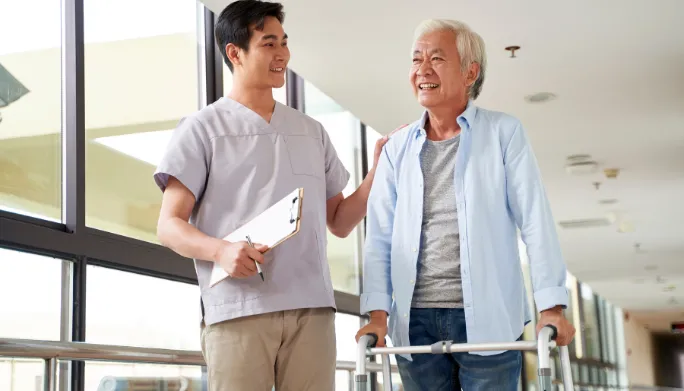Falls among seniors can have far-reaching consequences, extending beyond the initial incident. In this blog, we delve into the three primary issues seniors face when they experience a fall. From what prevents them from getting up to the challenges in the aftermath, understanding this domino effect is crucial for comprehensive fall prevention and enhanced senior well-being.
Issue 1: Physical Impairments Hindering Self-Recovery:
After a fall, physical impairments can pose significant challenges for seniors attempting to get back on their feet. Factors such as weakened muscles, joint stiffness, and reduced flexibility may make the act of standing up independently difficult. Addressing these physical limitations through targeted exercises and mobility training is essential for promoting self-recovery.
Issue 2: Fear of Falling Leading to Immobility:
The psychological impact of a fall often lingers, contributing to a fear of falling again. This fear can lead to a cycle of reduced mobility as seniors become apprehensive about engaging in activities that may pose a risk. Immobility, in turn, can result in muscle weakness and a decline in overall physical health. Overcoming the fear of falling involves a combination of physical therapy, cognitive-behavioral strategies, and creating a safe environment to rebuild confidence.
Issue 3: Prolonged Down-Time and Health Consequences:
The time spent on the ground before recovery is a critical period that can impact seniors’ health. Prolonged down-time increases the risk of complications such as pressure sores, dehydration, and hypothermia, especially if the fall occurs in an isolated or less-trafficked area. Swift response and assistance in the aftermath of a fall are crucial to minimize these health risks and ensure a quicker recovery.
Preventive Measures and Solutions:
Comprehensive Fall Risk Assessment:
Conducting a thorough fall risk assessment, including evaluating physical and cognitive factors, helps identify vulnerabilities and tailor interventions accordingly.
Strength and Balance Training:
Implementing targeted exercises to improve strength and balance is instrumental in preventing falls and enhancing the ability to recover independently.
Home Safety Modifications:
Adapting the living environment by removing hazards, installing grab bars, and ensuring adequate lighting can significantly reduce the risk of falls.
Emergency Response Systems:
Utilizing wearable devices or emergency response systems ensures timely assistance in case of a fall, minimizing down-time and potential health complications.
Understanding the issues seniors face during and after a fall empowers us to implement proactive measures for prevention and timely intervention. By addressing physical and psychological aspects, promoting mobility, and creating a safe living environment, we can contribute to a safer and more resilient experience for our senior community members. Stay tuned for more insights into fall prevention and senior well-being.



